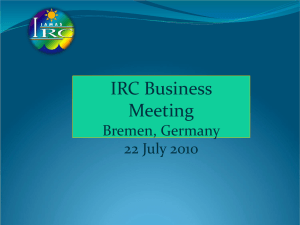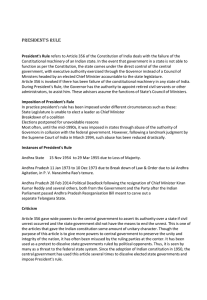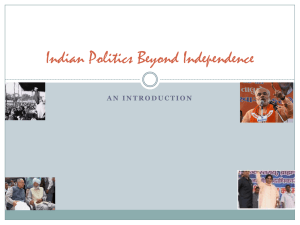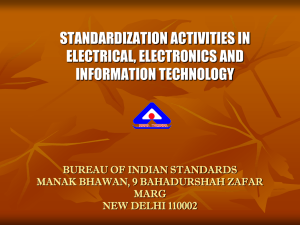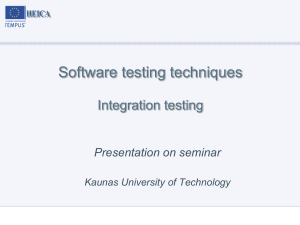View details. - Irccanada.ca
advertisement
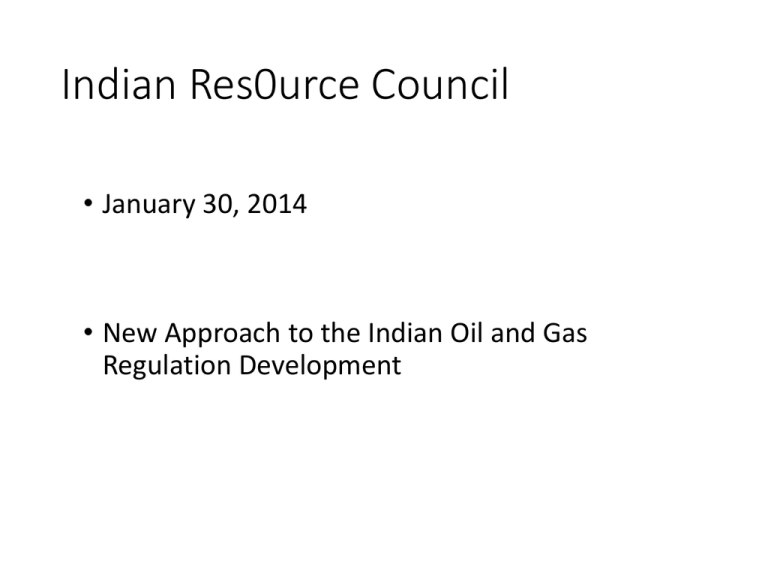
Indian Res0urce Council • January 30, 2014 • New Approach to the Indian Oil and Gas Regulation Development Outline of Presentation • Why do we need to amend the Act and Regulations? • What has taken place to date? • What is the new approach? Why do we need to amend the existing Act and Regulations? • The previous Indian Oil and Gas Act and Regulations has not been amended since its enactment in 1974. • Other oil and gas regimes are updated on a regular basis to ensure they are current and remain relevant. • Technological advances in oil and gas development require regulations to be updated. • First Nation’s are more involved in not only regulating oil and gas activity they have became the developer. What has taken place to date? • In 1998, IOGC initiated a process to amend the Indian Oil and Gas Act. • Bill C-5, Indian Oil and Gas Act, 2009, received royal assent on May 14, 2009. • This enabling legislation provides the authority to make new modern regulations that are intended to benefit not only Canada in fulfilling their role as a Fiduciary but First Nations as well. What has taken place to date? • The JTC1 was established to ensure FN involvement and input was provided in the amendment of the Regulations. • The regulations were divided into 10 modules, and once those 10 modules were vetted through the JTC1 as per the agreed to TOR both the Act and the new Regulations would coming in force. What has taken place to date? • The JTC1 has reviewed and submitted recommendations for changes on 5 of the 10 modules; • • • • • • Drainage and Compensatory Royalties Surface Tenure Sub-Surface Tenure Exploration Module Conservation Module. The New Approach • July 4, 2013, IOGC proposed the “New Approach” in writing to IRC. • The Indian Oil and Gas Act, 2009 along with the following amended regulations would come into force by December, 2014. • Sub-surface, Drainage & First Nation Audit Powers • The remaining modules will be vetted through the JCT1 process after that date and will come into force at a later date. IOGC Rationale-New Approach • Due to the huge volume of the work and the increasing complexity of the subject matter, it is not realistic to have all regulatory amendments completed by April, 2014; • IOGC’s initial target completion date. • First Nations can benefit from some core amendments that are of immediate importance to FNs; • With a “clear commitment” for the completion of the remaining modules. Minister Valcourt’s Letter • On December 3, 2013, the Minister provided the following commitments in return of our support for the new approach; • Canada will work with IRC/JTC1 until the Indian Oil and Gas Regulations, 1995 have been entirely replaced with modern, new regulations; • Commit to provide adequate multi-year funding to carry out this work. • The Minister also requested that we respond confirming whether or not we will support the new approach. IRC Members Resolution to New Approach. • The member First Nations of IRC met on Jan. 22/14 to make a decision of the proposed new approach. • The member First Nations voted to proceed with the new approach with the following conditions. • The new approach in no way derogate or abrogate from FN’s s. 35 Inherent, Aboriginal and Treaty Rights. • The Crown fully comply with its duty to consult and accommodate individual FNs. • IRC/JTC remain fully involved. • Adequate time and funding be given for IRC/JTC1’s review of changes • Funding for FN Business Centres in Sk and AB • All modules will be dealt with inaccordance with Terms of Reference. • Annual meeting with IRC and Minister of Aboriginal Affairs. • To date we have not heard if the Minister accepted our conditions. End of presentation • New Approach to the Indian Oil and Gas Regulation Development








